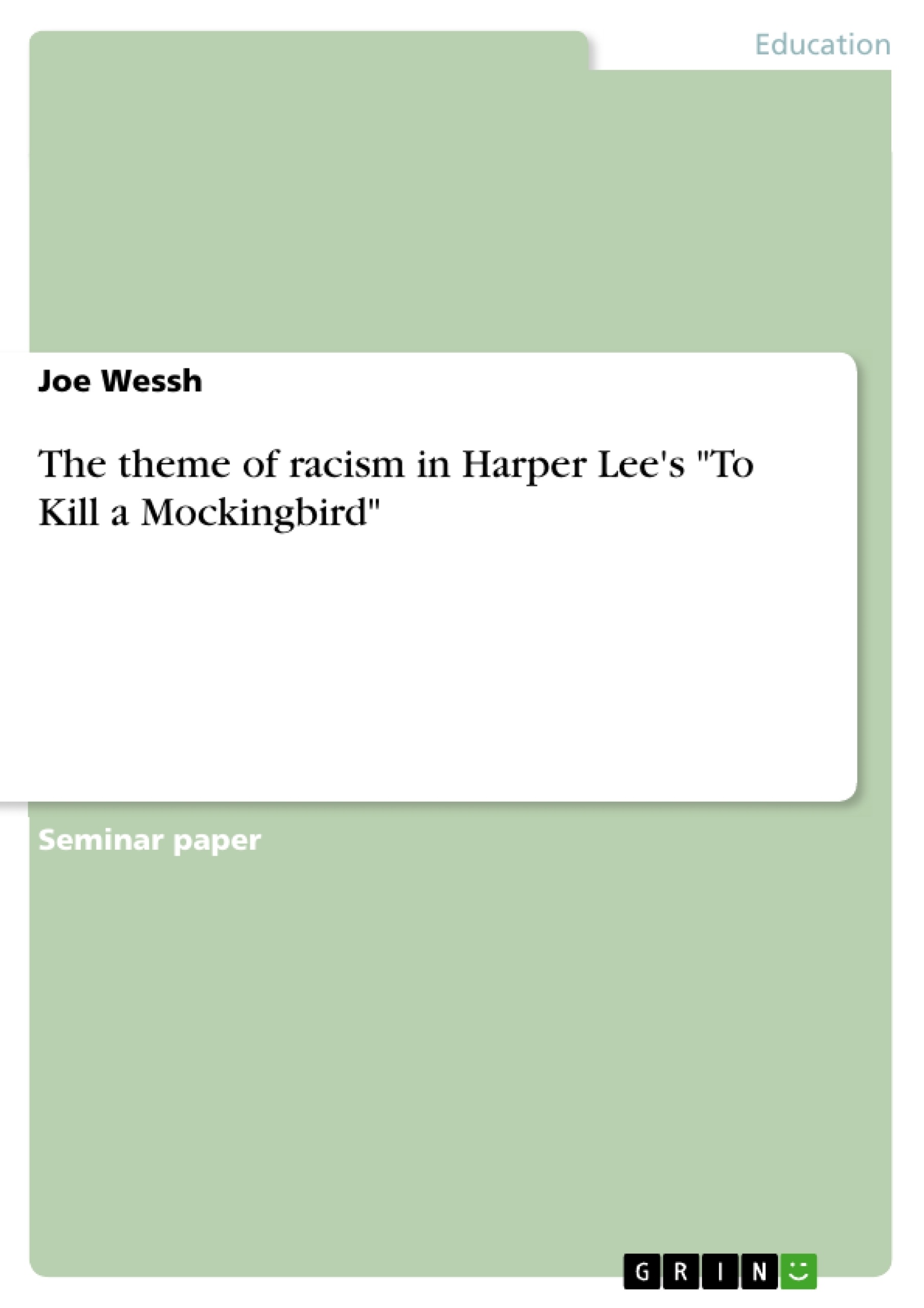In Harper Lee's "To Kill a Mockingbird", the theme of racism is highlighted in various interactions between the characters.
The story is narrated through the eyes of the protagonist, Scout, who resides in a fictional town in Alabama named Maycomb with her father Atticus and brother Jem. In the novel, various aspects of the vice are depicted, mainly in the conflict between the whites and the African-American community. Most of the misunderstandings in the town are caused by stereotypes that are told by members of opposing races. Thus, the narration details how prejudices and injustices along racial lines can impede social harmony.
The discrimination against individuals based on their race was a common phenomenon in the 1930s. In history, people of color, particularly the blacks, were not accepted in white society. The white majority exercised supremacy over the black minority, and the latter was mainly involved in manual labor.
Table of Contents
- Racism Theme in To Kill a Mockingbird
Objectives and Key Themes
This preview aims to provide a comprehensive overview of Harper Lee's To Kill a Mockingbird, focusing on its portrayal of racism in 1930s Alabama. The analysis will explore how the novel depicts racial prejudice, injustice, and the societal consequences of these issues. It will also examine the characters' responses to racism and the lasting relevance of the novel's themes.
- The pervasiveness of racism in Maycomb, a microcosm of broader societal issues.
- The contrast between Atticus Finch's moral stance and the prejudiced attitudes of the community.
- The experiences and perspectives of children, Scout, Jem, and Dill, in navigating racial tensions.
- The use of irony and symbolism to highlight the hypocrisy and blindness of prejudice.
- The novel's enduring relevance in addressing contemporary issues of racial inequality.
Chapter Summaries
Racism Theme in To Kill a Mockingbird: This chapter analyzes the central theme of racism in Harper Lee's To Kill a Mockingbird, focusing on the various interactions between characters in the fictional Alabama town of Maycomb. It details how racial stereotypes fuel misunderstandings between white and African-American communities, highlighting how prejudice impedes social harmony. The chapter examines the historical context of racial discrimination in the 1930s, emphasizing the societal supremacy of whites over blacks and the resulting injustices. Specific examples from the novel, such as the use of racial slurs like "nigger-lover" and the unfair trial of Tom Robinson, illustrate the deeply ingrained racism within Maycomb. The chapter contrasts the attitudes of Atticus Finch's family, who strive for neutrality and compassion, with the pervasive prejudice of the wider community. It also touches upon the ironic juxtaposition of Atticus's partial blindness and his clear vision of equality, suggesting that those who are not blinded by prejudice can achieve harmony despite racial differences. The chapter concludes by highlighting the lasting relevance of the novel's depiction of racism in modern society, drawing parallels between Maycomb's racial dynamics and contemporary instances of prejudice and inequality. The analysis emphasizes the novel's use of irony to underscore the ignorance and hypocrisy of many community members. The use of the "nigger-lover" slur, for example, is shown to be a derogatory term used not only against people of color but also to denigrate whites who support them. The chapter also discusses the unfair conviction of Tom Robinson, emphasizing the societal structures that perpetuate racial injustice.
Keywords
Racism, prejudice, racial inequality, social injustice, To Kill a Mockingbird, Harper Lee, Maycomb, Atticus Finch, Tom Robinson, racial stereotypes, segregation, civil rights, social harmony, irony, symbolism, contemporary relevance.
Frequently Asked Questions: To Kill a Mockingbird - Racism Theme Analysis
What is this document?
This document is a comprehensive preview of an academic analysis of Harper Lee's To Kill a Mockingbird, focusing specifically on the theme of racism. It includes a table of contents, objectives and key themes, chapter summaries, and keywords.
What are the key themes explored in the analysis?
The analysis explores the pervasiveness of racism in Maycomb, Alabama; the contrast between Atticus Finch's moral stance and the community's prejudice; the children's experiences navigating racial tensions; the use of irony and symbolism to highlight the hypocrisy of prejudice; and the novel's enduring relevance to contemporary issues of racial inequality.
What is covered in the chapter summary?
The chapter summary delves into the central theme of racism in To Kill a Mockingbird, examining character interactions, racial stereotypes, the historical context of racial discrimination in the 1930s, and specific examples from the novel like the trial of Tom Robinson and the use of racial slurs. It contrasts Atticus Finch's family's attitudes with the community's prejudice, highlighting the novel's use of irony and symbolism. Finally, it connects the novel's depiction of racism to contemporary issues.
What are the objectives of this analysis?
The analysis aims to provide a comprehensive overview of To Kill a Mockingbird, focusing on its portrayal of racism in 1930s Alabama. It explores how the novel depicts racial prejudice, injustice, and societal consequences, examining characters' responses and the novel's lasting relevance.
What are the keywords associated with this analysis?
Keywords include: Racism, prejudice, racial inequality, social injustice, To Kill a Mockingbird, Harper Lee, Maycomb, Atticus Finch, Tom Robinson, racial stereotypes, segregation, civil rights, social harmony, irony, symbolism, contemporary relevance.
What is the scope of the analysis?
The analysis is specifically focused on the theme of racism within Harper Lee's To Kill a Mockingbird, providing a detailed examination of its portrayal in the novel's narrative, characters, and historical context.
What kind of audience is this preview intended for?
This preview is intended for an academic audience interested in analyzing themes in literature, specifically the theme of racism in To Kill a Mockingbird. It provides a structured and professional overview of the analysis.
- Quote paper
- Joe Wessh (Author), 2019, The theme of racism in Harper Lee's "To Kill a Mockingbird", Munich, GRIN Verlag, https://www.grin.com/document/494396




